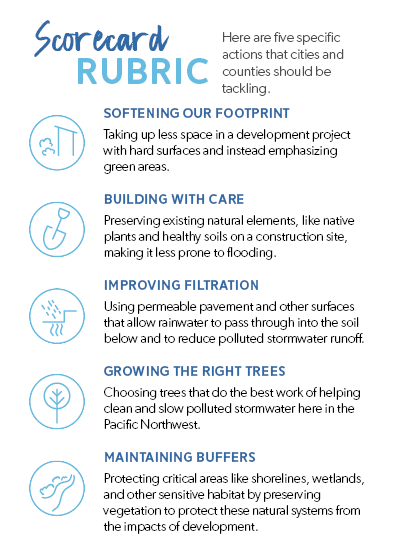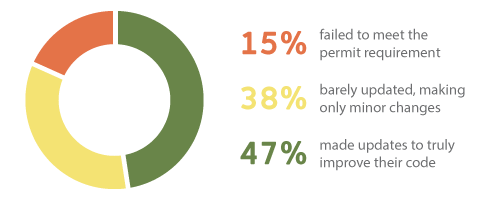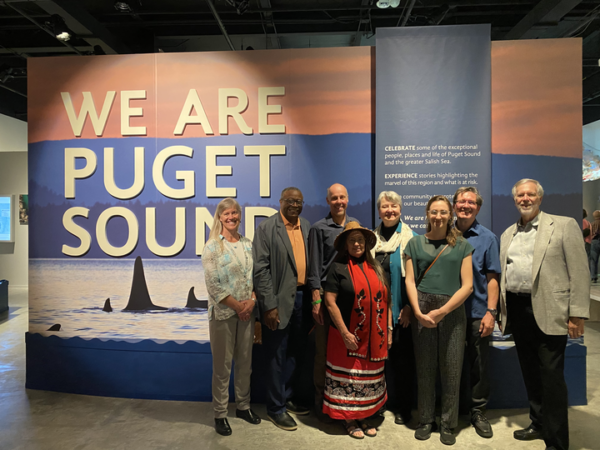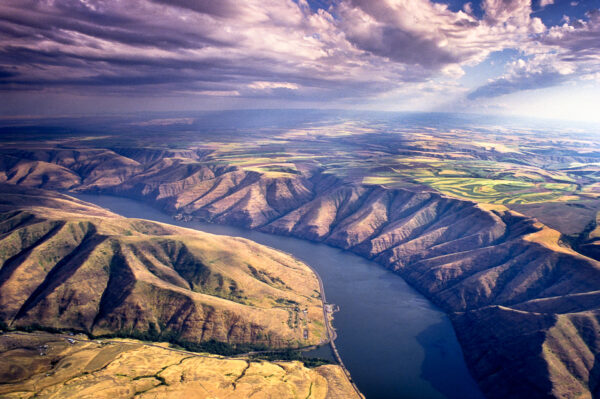Our first of its kind scorecard ranks cities and counties on combating Puget Sound’s largest source of water pollution: toxic stormwater runoff. View the scorecard at NaturesScorecard.com.
HOW WELL DID MY COMMUNITY SCORE?
Over the past few years, WEC and Puget Soundkeeper have tracked the 81 cities and counties around Puget Sound and graded them on five key indicators of if they accomplished the low-impact development goals the law set out. This included aspects like improving filtration, softening the footprints of our building, and protecting vegetation and soils – all of which reduce flooding and filter pollution!

You can see how your city has performed on the website, NaturesScorecard.com.
But our research for the scorecard reveals that over half of Puget Sound cities and counties are missing the mark. A full 15% failed to meet the permit requirement, and an additional 38% made only minor changes to their code. This project will put a spotlight on the communities who are leaders while also give those who are underperforming a kick in the right direction. Helping cities and counties bump up their score will be part of People For Puget Sound’s long term work.

WHY A SCORECARD?
Three years ago, Washington Environmental Council and Puget Soundkeeper set out to determine whether local cities and counties were taking on the responsibility of planning for walkable, green, and healthy communities. All large cities and counties were required to update their development codes and regulations in 2016 to make low-impact development the “preferred and commonly used approach.” Low-impact development (LID) code updates signal to us whether a city or county has actually taken meaningful steps towards planning a sustainable future. But not all have actually taken those steps.
“Recovering Puget Sound must include transforming how we manage stormwater as a region,” said Mindy Roberts, People for Puget Sound Program Director at Washington Environmental Council. “We are inspired by our cities and counties who are truly stepping up and taking responsibility for protecting community health and local waterways.”
The report highlights municipalities that went above and beyond the requirements, recognizing eight “green star” communities including Kitsap County and Olympia.
“In Kitsap, we have developed a culture of viewing water as a resource, said Charlotte Garrido, Kitsap County Commissioner. “A low-impact development approach allows us to work with the rain, rather than against it. This approach protects, restores, conserves, and reclaims our water — and this scorecard helps us know exactly where we stand in our region.”
“We’re grateful for the recognition as a “green star,” said Jim Cooper, City of Olympia Councilmember. “We know this work is critical and recognize the long-term investment. If you want to see smarter, greener stormwater solutions in action, you should come visit us in Olympia!”
View the full scorecard online at NaturesScorecard.com
Contact: Danielle Shaw at danielle@waconservationaction.org



